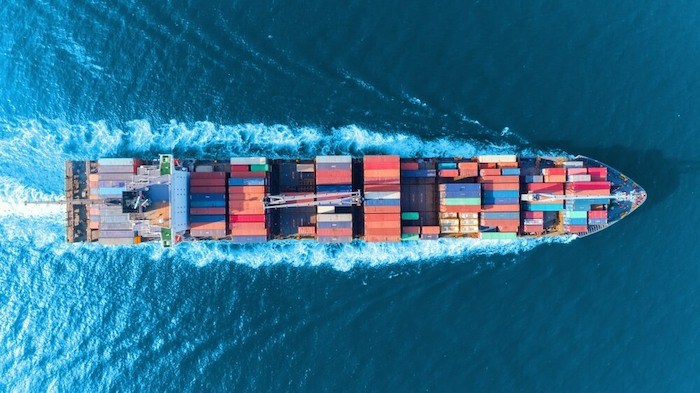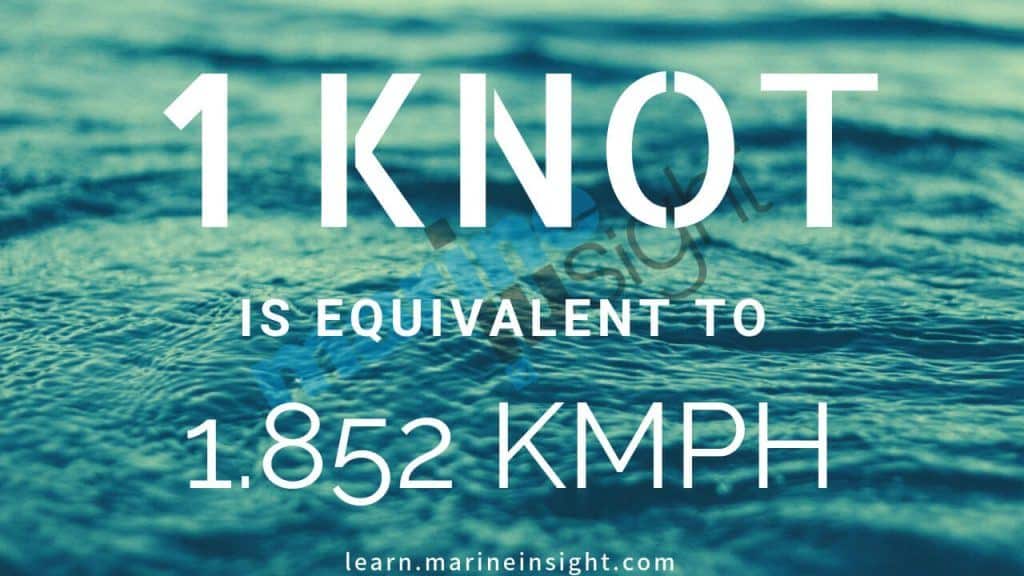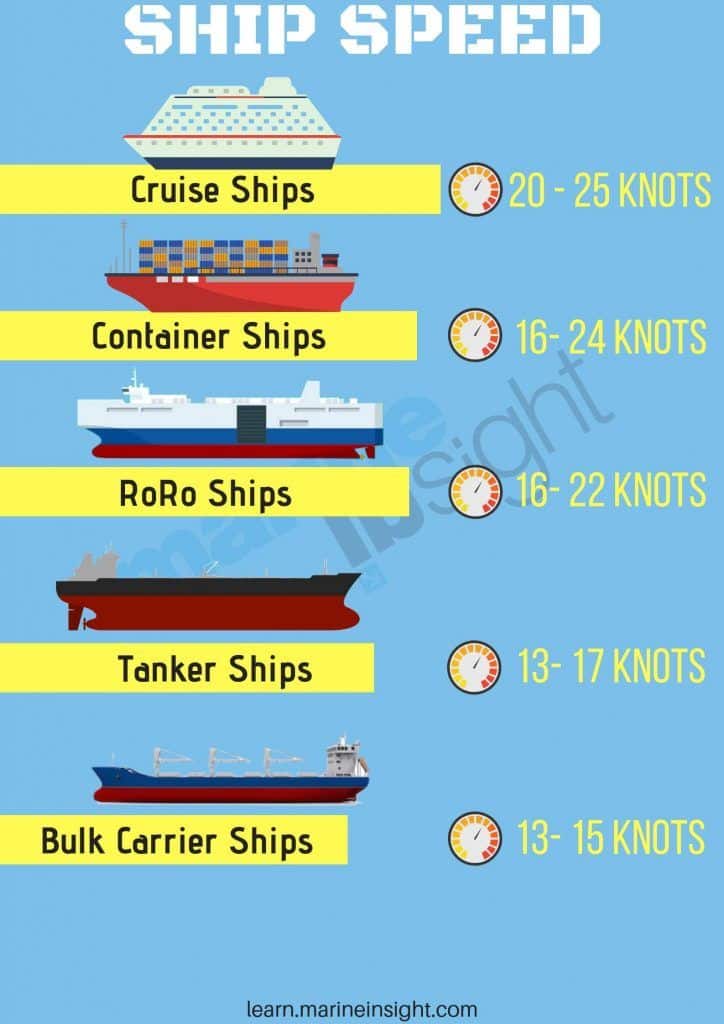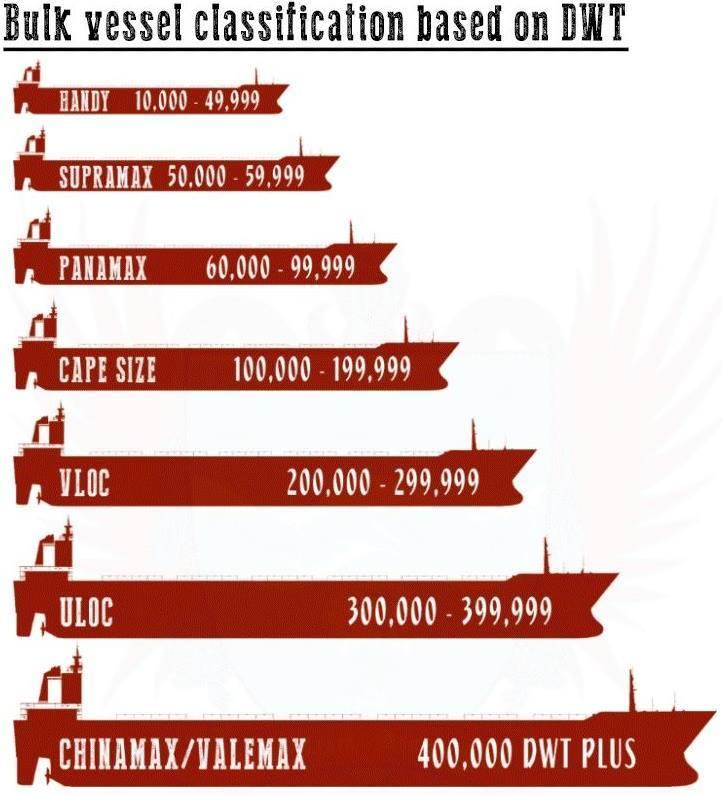Ship Sizes/ Speeds/Voyage Time / Maritime Regulations
Cargo ships or vessels come in different types and sizes to meet the various demands of marine cargo transportation. Cargo ships are categorised partly by capacity and partly by dimensions (often related to the different canals and canal locks they are traveling through). Sizes of cargo vessels range from a modest handysize carriers(10,000 – 30,000 DWT) to mammoth VLCC and ULCC super tankers with a capacity to carry cargoes of more than 200,000 DWT. Aframax and Panamax are mid-sized cargo vessels.
Aframax – AFRA stands for Average Freight Rate Assessment. As the name suggests, Aframax are medium-sized oil tankers with a dead weight tonnage (DWT) between 80,000 and 119,999. Though relatively small in size in comparison to VLCC and ULCC, Aframax tankers have a capacity to carry up to 120,000 metric tonnes of crude oil. They are just ideal for short to medium-haul oil trades, and are primarily used in regions of lower crude production, or the areas that lack large ports to accommodate giant oil carriers. 
Aframax tanker
They are very large and ultra large cargo vessels with a capacity over 150,000 DWT. They are categorised under VLCC, ULCC, VLOC and ULOC and can be as large as 400,000 DWT or even more. They serve regions with largest deepwater terminals in the world and are primarily used for transporting coal and iron ore. Because of their giant size, they are suitable to serve only a small number of ports with deepwater terminals.

Very Large Ore Carrier
Theseships are very large bulk carrier which can’t be longer than 360m (1,180 ft), wider than 65 m (213 ft) and her draft can’t be more than 24 m (79 ft). The deadweight tonnage of these vessels is 380,000–400,000 DWT. Ship’s maximum measurements are defined by the Chinamax standars, allowing ports to determine whether they can accommodate ships in this class. As the name suggests, these ships are often used to move cargo to and from China along several trade routes, such as the iron ore route from Brazil to China.

Chinamax ship
Handymax are small-sized cargo ships with a size less than 60,000 DWT. Supramax vessels have capacity between 50,000 to 60,000 DWT. Due to their small size, they are capable of operating in regions with small ports with length and draught restrictions. They form the majority of ocean going cargo vessels in the world.

Handymax
Handysize are small-sized ships with a capacity ranging between 15,000 and 35,000 DWT. These vessels are ideal for small as well as large ports, and so make up the majority of ocean cargo vessels in the world. They are mainly used in transporting finished petroleum products and for bulk cargo.

Handysize
As the name suggests, Malaccamax ships are the largest ships that can pass through the Strait off Malaccawhich is 25 m (82 ft) deep. As per the current permissible limits, a Malaccamax vessel can have a maximum length of 400 m (1,312ft), beam of 59 m (193.5 ft), and draught of 14.5 m (47.5 ft).

New Maersk Tripple E class – Malaccamax ship
As the name suggests, Panamax and New Panamax ships are travelling through the Panama Canal. They strictly follow the size regulations set by the Panama Canal Authority, as the entry and exit points of the Canal are narrow. A Panamax vessel can’t be longer than 294,13 m (965 ft), wider than 32,31 m (106 ft) and her draught can’t be more than 12,04 m (39.5 ft). These vessels have an average capacity of 65,000 DWT, and are primarily used in transporting coal, crude oil and petroleum products. They operate in the Caribbean and Latin American regions. The New Panamax has been created as a result of the expanding plans for Panama Canal locks. Expanded locks will be around 427 m (1400 ft) long, 55 m (180 ft) wide and 18,30 m (60 ft) deep so Panama Canal will be able to handle larger vessels .

Ships in Panama Canal
Q-Max (Qatar-max)-Q-Max’s are largest LNG carriers that can dock at the LNG terminals in Qatar. Q-Max ship is 345 metres (1,132 ft) long, 53.8 metres (177 ft) wide and 34.7 metres (114 ft) high, with a draught of approximately 12 metres (39 ft). It has a capacity of 266,000 cubic metres (9,400,000 cu ft), equal to 161,994,000 cubic metres (5.7208×109 cu ft) of natural gas.

Q-max Mozah
As the name suggests, Seawaymax ships are the largest ships that can pass through the locks of St. Lawrence Seaway. These ships are 225,6 m (740 ft) long, 23,8 m (78 ft) wide and 35,5 m (116 ft) high, with a draught of 7,92 metres (26 ft).

Seawaymax ship
Suezmax are named after the famous Suez Canal. They are mid-sized cargo vessels with a capacity ranging between 120,000 to 200,000 DWT. They are designed to pass through the majority of the ports in the world. Currently the permissible limits for suezmax ships are 20.1 m (66 ft) of draught with the beam no wider than 50 m (164.0 ft), or 12.2 m (40 ft) of draught with maximum allowed beam of 77.5 m (254 ft).

Ship passing through Suez Canal
VLCC stands for Very Large Crude Carriers. They have a size ranging between 180,000 to 320,000 DWT. They are very flexible in using terminals and can also operate in ports with depth limitations. VLCCs are used extensively around the North Sea, Mediterranean and West Africa. ULCC or Ultra Large Crude Carriersare the largest shipping vessels in the world with a size more than 320,000 DWT. Called Super Tankers, ULCCs are used for long-haul oil crude transportation from Middle East to Europe, Asia, and North America.

Ultra Large Crude Carriers

At the design level, bigger container ships with less speed are being constructed to obtain less CO2 emissions per container. At the operational level, the practice of reducing speed as a response to depressed market conditions and high fuel prices known as slow steaming is being used in almost all commercial shipping sector. Therefore, it is very important to know the speed of the ship and all the factors affecting the same.
How is the ship’s speed measured? – Ancient seafarers used to measure the speed of the ship by ‘chip log’. It consisted of a log attached to a rope with a number of knots at equal intervals. The log was dropped in the water at the aft of the ship and one sailor watched the sand empty through 30-second sandglass while others counted the number of knots being passed. The number of knots passed multiplied by the distance between the knots and divided by 30 seconds told them that 1 knot is equal to 1.852 kilometers per hour or 1 knot is equal to 1 nautical mile per hour. This is how ‘knots’ originated and became a metric system to measure ships speed.
1 knot = 1.852 km/hr or 1 nautical mile = 1.852 km

A nautical mile is based on the circumference of the earth and is equal to one minute of latitude. Therefore, it is used by ships in charting and navigation. These days most ships use GPS to measure the speed of the ship. GPS system consists of a transmitter, receiver and satellite system. This is the most accurate method of measuring the speed of the vessel. Other methods of measuring speed are using doppler shift and correlation velocity log or CVL. Doppler shift uses the Doppler effect, which is the relative change in frequency of a wave when the source and the observer are in relative motion. The sound pulse generated by the ship’s motion is reflected off the ocean floor and the same is measured by sonar instruments on a ship. The CVL uses a combination of multiple transmitters and receivers. Being one of the expensive methods of measuring speed, correlation is generated between signals from different transmitters at different locations and the speed of the ship is calculated.
Average Speed of Different Types of Ships – Different types of ships have different service speeds.
- Bulk Carriers – 13 to 15 knots
- Container Ships – 16 to 24 knots
- Oil and chemical tankers – 13 to 17 knots
- RORO vessels – 16 to 22 knots
- Cruise Ships – 20 to 25 knots
Different types of ships have different drafts, different cargo, different design and hence accordingly different service speed.

Factors at the most operational level and design level have to be considered to design the speed of the vessel. Out of everything consumed on the ship, fuel is the item which costs the most money. Owners want economical ships having lower fuel consumption to sustain in the current world of prevailing oil crises and increasing oil prices. Hence, merchant ships, depending on which cargo they are being designed for along with their route and draft, are constructed to be as economical as possible. The amount of fuel consumed is very important as it is the most expensive element of transportation by sea for ships. Fuel consumption is proportional to the displacement of the ship to the power of 2/3 (D^2/3) and the cube of the ship’s speed (V^3). V here denotes the speed of the vessel in knots and displacement is the weight of water displaced by the volume of the portion of the vessel which is submerged in water. Here now if displacement is doubled, approximately 1.6 times the power will be required and hence fuel. Otherwise, if the speed of the ship is doubled, eight times the quantity of fuel will be required. From this, we can understand that the effect of the increase in speed is more than the effect of an increase in displacement or the payload for a ship on its fuel consumption. This shows speed is a critical factor in the operation of a ship. Limitations are imposed on the increase if displacement due to technology, drafts of various vessels at different places and routes like Suez Canal. The increase in consumption of fuel is quite reasonable per ton in comparison to per knot increase in speed. For every ship, there will be an economical range of speed and displacement with which a prudent shipowner should comply in order to make a profit in a world of see-sawing freight and charter prices which is dependent on the supply and demand of ship tonnage amongst other things.
How and why the ship’s speed changes?
Speed of a ship depends on various factors like displacement of the vessel, draft, wind force and direction, sea weather condition, condition of the hull and the propeller and so on. For an empty ship which has no cargo loaded, displacement is less and hence the draft is less. There is less resistance as the lesser surface of the hull is in contact with water and as there is not much load on the main engine, it gives more speed at less power. Whereas for a loaded ship, the draft will be more and thus the resistance against the hull. Also, for the same power of the main engine, the ship will have lesser speed as the load on the main engine will be higher. Other factors like the magnitude of wind force and the direction of the wind will act in increasing or decreasing the load on the Main engine and thus increasing or decreasing the speed of the vessel for the same main engine rpm. Hull and propeller getting fouled will increase the drag resistance of the hull and for the same load of the main engine decrease the speed of the vessel. Ships speeds are regulated depending on whether they are coasting or near to land or port, approaching a port or transiting a canal. The basic reason for this is for the safe navigation and proper manoeuvring of the vessel. Also, in certain areas near land, it is mandatory to reduce the speed of the ship to decrease emissions from the main engine. Slower speeds in the proximity of land have significant environmental and human health benefits as NOx, Sox, PM, and carbon emissions are reduced. Certain areas have made it mandatory for a ship to reduce speed and set a speed limit for navigation safety and to reduce emissions from the main engine. Defense ships or naval ships have more speed and better manoeuvring capabilities than a merchant ship. Defense ships come under the naval command of a country and are of various types like an aircraft carrier, destroyer, coast guard vessels and so on. They are faster in voyage speed in general compared to a merchant ship. Merchant ships have a larger deadweight than a navy ship of the same size. Merchant ships also usually have only one propeller while a navy ship has two or more propellers to increase their capability of manoeuvring. Merchant ships must follow rules of International convention codes, classification societies, flag state, and port state rules. They would be detained if they fail to comply with the regulations. While navy ships do not need to follow all the rules and regulations. Thus, a navy ship has more speed and manoeuvring capability when compared to a merchant vessel. Other modes of transport like the air, rail and road are expensive compared to sea transport, hence shipping should be competitive in its own field in the modern market. Although modern markets prefer fasters and perfect deliveries, quite often for a certain trade, speed of the vessel is played around with designing an economic vessel and main consideration in this is the projected fuel cost in the next fifteen years or so which is a normal life of a ship. It has become necessary to know the importance of regulating ships speed and how ships speed is measured. An efficient regulation of vessels speed and good knowledge of different speeds of different vessels and reasons behind them is necessary not only to follow rules and regulations of international conventions but also to make the vessel economical for the operator in the best possible way, to reduce the emissions from main engine and make the ship environmentally friendly, and for safety of navigation.
United Nation’s International Maritime Organization (IMO) plays an important role in handling all international maritime affairs with support from the maritime nations of the world.
One of the main aims of IMO is to ensure co-operation among maritime governments of the world. It also uses a number of instruments to implement and maintain the highest standards in areas of maritime safety, prevention of marine pollution, and shipping navigation and trade.
The following are 5 important instruments which IMO uses to ensure smooth operations at the sea, backed by highest standards of maritime safety.
The 5 important instruments of IMO are:
- Conventions
- Protocols
- Amendments
- Recommendations, codes, and guidelines
- Resolutions
Conventions – A convention is a written agreement with several parts. Conventions form a major part of maritime affairs governed by the IMO. Some of the major conventions by IMO are Safety of Life at Sea (SOLAS) 1974 convention and International convention for prevention of pollution from Ships (MARPOL). It is to note that conventions generally have several sub-parts, which would describe in details various aspects of the subject defined by that particular convention. For e.g. MARPOL convention has six parts which are known as annexes. Each of this annexe deals with different aspect of marine pollution. It is also possible that details given within a convention are put under an associated code, which provides further technical details of that aspect; for e.g. the Life saving appliances (LSA) code gives details for minimum requirements for safety equipment used on board ships. Each member state must accept the details mentioned in conventions put forth by the IMO and agree to international supervision required under such conventions. Thus, conventions act as a treaty between the IMO and member states. It is imperative that every member state abides by the rules and regulations put forth by the IMO.
Protocols – Protocol is an important instrument used by the IMO to introduce changes to conventions, which are already adopted but not yet entered into force. For e.g. SOLAS convention 1973 was amended twice using protocols – by 1978 SOLAS protocol which entered into force in 1st May 1981 and by 1988 SOLAS protocol which entered into force on 3rd Feb 2000. Both the protocols are now known as SOLAS 74/78 and SOLAS 74/88.
Amendments – As mentioned above, amendments are major changes that are brought into action using protocols. Amendments are the reforms that are needed in a convention and are backed by the protocols. For e.g. Because of several accidents at sea, there was an urgent need to change the MARPOL 1973 convention in 1970s. These changes or amendments were brought into action by the combined convention-protocol instrument called MARPOL 73/78 on 2nd October 1983.
Recommendations, codes, and guidelines- Recommendations are mainly guidelines which are not legally accepted. They are not formal documents like convention or protocol but are a list of recommended practices that are closely linked to conventions. For e.g. timber deck cargo code. Recommendations can also be guidelines which are waiting to be accepted by the IMO. However, it is to note that though recommendations are not legally binding, some governments might apply them in whole or in part. Codes and guidelines can be both mandatory and non mandatory. Codes such as ISM and IBC codes are mandatory and are a part of a parent convention or protocol.
Resolutions – Resolutions are the finalized documents which are accepted by the IMO or any of the main body under IMO. They generally result from an agreement on a recommendation or amendment. Resolution passed by the assembly is denoted in a peculiar manner.
For e.g. Resolution A. 586 (XIV).
Where, A = assembly; 586 = serial number of resolution; and XIV = Made by the 14th session of the assembly
E.g. 2: MEPC. 54 (32)
Where, MEPC = Marine environment protection committee; 54 = serial number; 32 = 32nd session of the committee.


